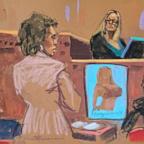London Police See Similarities Between Two Attacks, Sources Say
WASHINGTON, July 27, 2005 — -- London police now see striking similarities between the July 7 and July 21 bomb attacks, ABC News has learned.
But they initially faced a huge roadblock, as they began their investigation.
The force of the July 7 blasts was so strong that police could not find the bomb components, making it extremely difficult to determine who was responsible for the attacks.
On July 12 -- after five days with few clues about the exact type of bombs used in the assault -- British authorities got a needed break.
They found the car of one of the bombers, Shehzad Tanweer, 35 miles outside of London. In the trunk, authorities found 12 bombs and four improvised detonators made from material readily available at a supermarket or hardware store.
"One of the things terrorism experts like to do is see the signature of the bomb and it reveals like a painting the signature of the painter. It reveals who the bombmaker was," said Dick Clarke, a former White House counterterrorism czar and now an ABC News consultant.
The bombs in the car were an investigative treasure trove.
Some of the explosives were packed in glass bottles, while others were packed in plastic containers. Some were designed to detonate with an electric charge. Others had fuses that could be lit by a match. Police believe all were made with a peroxide base.
The bombs in both incidents were carried in knapsacks. Some of the devices recovered after the July 21 incident, like those recovered earlier, were in plastic containers. They, too, were made with peroxide-based explosive.
"There is an overwhelming presumption that there was one bombmaker -- one bomb factory for these two, these two different sleeper cells," Clarke said.




